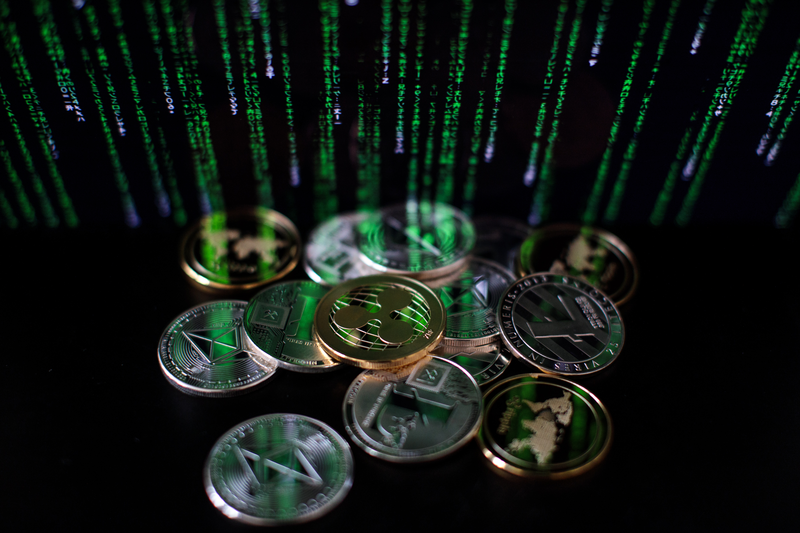What matters
Organizations need an understanding of Blockchain Analytics Tools (BATS) for improving transparency, security, and efficiency across industries by interpreting blockchain data, aiding in fraud detection, compliance, and business optimization.
What matters next
As blockchain technology advances, their role in providing insight and combating financial crime becomes increasingly significant.
These tools find applications across various sectors such as finance, supply chain management, and governance, where they assist in investigations, compliance, and combating financial crimes. The use of blockchain data as evidence in legal proceedings is on the rise, and blockchain analytics is playing a key role in enhancing transparency, security, and efficiency.
What are BATs?
Simply, BATs enable users to extract and examine blockchain and protocol data. Some are open source, while others are proprietary (and are available for a cost).
Depending on the BAT, the user may be able to track the movement of assets from wallet to wallet (including, as the BATs become more sophisticated, their paths through mixers/tumblers) or from on-ramp to off-ramp and to identify the human actor(s) behind wallets.
Enhancing cryptocurrency market security
Blockchain analytics is essential for analysing, identifying, and clustering data on a blockchain, which helps tackle illegal transactions such asmoney laundering and fraud.
Private companies are exploring openly accessible blockchain data to enhance the security of cryptocurrency markets. A notable example is the 2022 Colonial Pipeline case, where the US Department of Justice seized 63.7 bitcoins, worth approximately $2.3 million, demonstrating the effectiveness of BATs in law enforcement.
Blockchain analytics providers collect transactional data from publicly accessible blockchains to associate cryptocurrency holdings with illegal activities. Since transactions are permanently recorded on blockchains, analytics can link them with illegal behavior. Analytics providers can assign risk scores to wallets, which aids further investigation by law enforcement agencies. This ensures transparency and accountability in blockchain networks, aids in fraud detection and prevention, facilitates regulatory compliance, and assists regulatory and enforcement agencies for investigative purposes.
Financial institutions, supply chain managers, government entities, and cryptocurrency exchanges are increasingly using these analytics to monitor transactions, mitigate risks, maintain compliance, and enhance security.
Transparency and regulatory compliance
These tools are also crucial for decoding the vast information within blockchain networks and distributed ledgers. They can investigate entities, individuals, and transactions, enabling users to search events, monitor activities, and visualise data effectively.
Various industries rely on these tools to combat fraud and comply with regulations by using anti-money-laundering (AML) and know-your-customer (KYC) procedures to track funds and identify irregularities. While these tools share similarities with blockchain identity solutions, they prioritise transaction scrutiny and data modelling.
Understanding blockchain involves interpreting its data to understand its operations, which includes collecting transaction data and using various tools to monitor transactions and user actions. These tools extract, analyse, and visualize blockchain data, aiding in asset tracking, fraud detection, and business optimisation. Their utility extends to gaming, decentralised finance (DeFi), compliance, and trading arenas.
In DeFi, they help identify profitable opportunities by analysing transaction data and contract structures and ensure compliance by tracking transactions for AML and KYC regulations. For trading, they provide insights into market trends and price movements, aiding informed decision-making and risk management. In decentralized autonomous organisations (DAOs) and community governance, they offer metrics such as token prices and voting patterns, aiding in assessing success and community engagement.
Blockchain analysis utilises a range of metrics to evaluate various aspects of a blockchain network and its associated cryptocurrency. These metrics include network value to transactions (NVT), realised cap, HODL waves, coin age consumed, active addresses, transactions per day, hash rate, difficulty, and block time. Each of these metrics provides insights into different facets of the blockchain network, such as market capitalisation, investment patterns, network adoption, security, reliability, and efficiency.
In addition to these metrics, blockchain analysis employs several techniques to monitor transactions, track fund movement, and identify patterns. These techniques include the use of block explorers, transaction monitoring, address clustering, network analysis, token analysis, temporal analysis, and graph analysis.
The techniques aid in understanding blockchain behavior, tracking fund movement, detecting suspicious activities, identifying trends and activities within the blockchain ecosystem, studying the timing of transactions, and visualising relationships between entities and transactions.
Enforcement daoption
BATs are being relied upon by enforcement agencies to effectively combat criminal activities. These tools provide transparency to blockchain transactions, detect anomalies, and reduce risks for participants in the ecosystem. They assist in linking transaction activities to real-world entities, uncover hidden relationships, and facilitate extensive coverage and deep analysis of the crypto landscape.
This enables effective case management, systematic tracking of suspicious activities, and collaboration on investigations, enhancing the ability to combat financial crimes in the digital realm.
Evidentiary value and global regulatory recognition
Blockchain technology has emerged as a credible tool with significant evidentiary value, addressing various legal challenges and gaining recognition across jurisdictions. Evidence formed on blockchain-powered platforms holds importance in litigation and regulatory compliance.
Countries such as China have legally recognized blockchain as evidence, and regulatory developments in Europe and France are underway to further reinforce the legal recognition of blockchain technology.
As regulatory changes progress, blockchain technology will continue to offer enhanced legal security, paving the way for its widespread acceptance and utilisation in legal proceedings worldwide. BATs find diverse applications across differing industries, including financial institutions, supply chain management, government and regulatory bodies, and cryptocurrency exchanges, aiding in tasks such as monitoring transactions, risk mitigation, regulatory compliance, and bolstering security measures.
Conclusion
These types of tools are pivotal in enhancing transparency, security, and efficiency in various sectors by decoding blockchain data and aiding in fraud detection, compliance, and business optimisation. As blockchain technology continues to evolve, these tools will play an increasingly significant role in various industries, providing valuable insights into blockchain networks and cryptocurrencies, and assisting in the fight against financial crimes.
Sam Tyfield is co-head of Blockchain & Digital Assets at Shoosmiths. Sam’s background is in Corporate/M&A and he has been Chief Operating Officer and General Counsel of a high-frequency trading firm.



